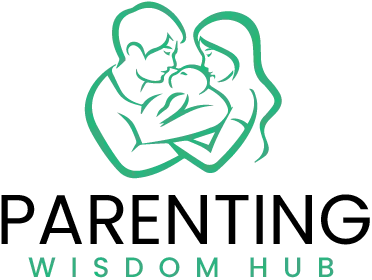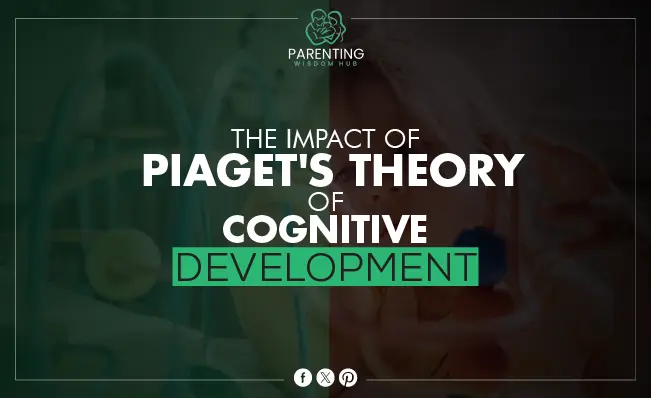Introduction
Swiss psychologist Jean Piaget pioneered child development. His substantial research on how children think, see, and understand the world has shaped psychology. Piaget’s Theory of Cognitive Development expanded our understanding of cognitive development and shaped how educators and parents approach child development and learning.
According to Piaget’s Theory of Cognitive Development, a child’s cognitive skills change at different times as they grow up. The theory stresses that kids don’t just passively take in information; they are also actively involved in learning. As kids play and observe their surroundings, they slowly build mental pictures of the world around them.
Understanding how the mind grows and changes is essential for anyone who works with or teaches kids. As children grow, their thinking and reasoning skills naturally improve. This helps adults support and guide them correctly at each stage of their growth.
The Four Stages of Cognitive Development
The Theory of Cognitive Development by Jean Piaget is one of the most important ideas in psychology. It shows how children’s thinking changes over time. Each stage shows a different way of looking at and dealing with the world. Here is a more in-depth look at these stages:
1. Sensorimotor Stage (Birth to 2 years)
Infants learn primarily through their senses and by physically interacting with their surroundings during the sensorimotor stage, the first stage of cognitive development.
- Focus on Sensory Experiences and Motor Activities: Infants use their senses and motor skills to explore their surroundings. Sucking, grabbing, and reaching help babies discover new objects and understand causes and consequences. A newborn may repeatedly test and confirm that shaking a rattle makes a sound.
- Development of Object Permanence: One of the main developments throughout the sensorimotor stage is object permanence—the understanding that objects exist even while out of sight. Infants may not look for a hidden object before this notion is developed, supposing it has disappeared. Object persistence emerges about 8–12 months and is essential to more complex cognitive processes.
- Substages of Sensorimotor Development: Piaget broke this stage down even further into six substages. These range from simple reflex actions like sucking and digging to the start of symbolic thought, when babies can mentally picture things and actions.
2. Preoperational Stage (2 to 7 years)
Children make a big step forward in their cognitive development at the preoperational stage. They start to use words and symbols to describe their world, but their thinking is still intuitive and focused on themselves.
- Development of Symbolic Thinking and Language: Youngsters utilize words, images, and objects to represent real-world entities in this stage. Rapid language development helps youngsters express themselves better throughout this stage. A child may use a stick as a sword, showing symbolic thinking.
- Egocentrism and Difficulty Understanding Different Perspectives: Preoperational children are frequently selfish and have trouble seeing things from others’ viewpoints. Piaget’s “Three Mountain Task,” in which youngsters describe a scene from another’s perspective, shows this. Most children at this stage recounted the scene as they saw it, showing their difficulty recognizing others’ perspectives.
- Centration and Lack of Conservation: This stage also involves centration, where youngsters ignore other factors. This is linked to their inability to understand conservation—that amount remains constant despite appearance. Children may think a taller, narrower glass holds more liquid than a shorter, wider one, even if the contents are the same.
3. Concrete Operational Stage (7 to 11 years)
In the concrete operational stage, kids start to think logically about real things and events, but they can’t think about things in a general way yet.
- Emergence of Logical Thinking and Understanding of Conservation: Kids start to use logical operations on real-world things at this age. The kids understand the idea of conservation and know that changing an object’s form or appearance doesn’t change its basic properties. In this case, they see a cookie is still the same amount even if you break it up.
- Ability to Classify and Organize Objects: Children learn to organize objects by size, color, and shape. They learn to classify objects and grasp relationships like “a dog is a type of animal.” They can also mentally reverse acts without touching the things.
- Understanding of Time, Space, and Quantity: Additionally, kids get a better sense of time, place, and quantity during this stage. They feel more comfortable doing math tasks like adding and subtracting, and they start to understand what measurements mean.
4. Formal Operational Stage (11 years and up)
The last stage of cognitive growth is the formal operational stage. This is when people learn to think abstractly, use logic, and draw conclusions.
- Development of Abstract and Hypothetical Thinking: Adolescents can now think about love, justice, and freedom without concrete examples. They can also imagine “what if” scenarios and explore alternatives beyond reality. This capacity enables more complicated problem-solving and moral, intellectual, and ethical exploration.
- Ability to Use Deductive Reasoning: Formal operational thinkers can deduce specific results from general principles. Socrates must be mortal if all humans are mortal, and Socrates is human. Higher-level math, science, and personal values depend on this style of reasoning.
- Metacognition and Advanced Problem Solving: Metacognition—the ability to think about oneself—is another significant development. Teens can evaluate their thinking, problem-solving, and decision-making. This superior cognitive skill is crucial for academic and personal improvement.
Piaget’s steps of cognitive development are an excellent way to think about how kids’ minds change over time. Families, teachers, and other adults who care for children can better support their cognitive development and help them reach their full potential by understanding and embracing these stages.
Key Concepts of Piaget’s Theory of Cognitive Development
The Theory of Cognitive Development by Jean Piaget is a central developmental psychology framework. It explains how youngsters learn to think. This idea explains how youngsters understand the world, absorb new knowledge, and develop cognitive capacities. Education, child care, and parenting require understanding these principles.
Schemas: Mental Frameworks for Understanding the World
The idea of frameworks is at the heart of Piaget’s theory. Schemas are the mental structures or frameworks people use to assemble and make sense of knowledge. These cognitive structures help kids make sense of their events by showing them how to organize and store information.
- Definition of Schemas: Schemas are mental templates that organize information and experiences into meaningful patterns. A youngster may learn “dog” from household pets, novels, and TV. This schema may include “four legs,” “fur,” “barks,” and “tail.” After meeting different canines, the child’s schema gets more developed and complex.
- Role of Schemas in Learning: As youngsters learn and interact, their schemas change. Children use their schemas to interpret new things. For instance, a toddler with a schema for dogs may initially mistake a wolf for a dog. They change their schema to distinguish dogs from wolves as they learn more. Schemas are essential to cognitive development, helping children understand their world.
- Evolution of Schemas: Schemas mature as children learn and experience the world. Simple early schemas focus on size, shape, and function. Child schemas become more sophisticated as they develop, allowing them to understand abstract concepts, relationships, and cause-and-effect dynamics. Cognitive growth is dynamic therefore, schemas evolve continuously.
Assimilation and Accommodation: Adapting to New Information
Piaget found two essential processes—assimilation and accommodation—that show how kids change their models when they learn new things. These processes are critical to brain development because they show how kids learn and how their minds change over time.
Assimilation: Child assimilation occurs when new information is added to an old schema without affecting it. This approach helps children understand new experiences by connecting them to their past. If a youngster develops a schema for “birds” that contains “can fly” and “has feathers,” they may easily associate a sparrow or robin with this schema. Assimilation helps youngsters learn by fitting new information into their mental frameworks.
Accommodation: Accommodation occurs when new information does not fit neatly into a current schema, causing the child to change or construct a new schema. This technique helps youngsters adjust to new situations, which is crucial for cognitive development. A child may be startled to find that penguins cannot fly when they first see one. They adapt their “bird” schema to include that not all birds can fly in response to this new information.
Children accommodate when events contradict their understanding, rethinking and reorganizing their mental models.
Balance Between Assimilation and Accommodation: He dubbed cognitive growth “equilibration.” Piaget felt assimilation and accommodation were balanced. Children initially strive to fit new experiences into their schemas. If this fails, they change their schemas, creating a new equilibrium. This dynamic relationship between assimilation and accommodation drives cognitive development.
Application of Piaget’s Theory in Education
The Theory of Cognitive Development by Piaget gives us helpful information about how to teach in ways that help kids learn better. Piaget recognized four stages of cognition: sensorimotor, preoperational, concrete operational, and formal operational. Teachers can ensure that their lessons meet the needs of each student as they grow.
- Developmentally Appropriate Practices: Teachers should plan learning activities that are right for the student’s level of understanding. In the preoperational stage, for example, it’s important to have hands-on learning activities like play and visual tools. In comparison, students in the concrete operational stage do better with tasks requiring more logic and real-world objects.
- Encouraging Exploration and Discovery: Piaget stressed how important it is to learn by doing. Giving students chances to explore, ask questions, and work together to solve problems helps them build their understanding of ideas. This method allows kids to understand more because it lets them use what they already know while taking in new knowledge.
- Fostering Social Interaction: Collaborative learning can help students’ brains grow by letting them share their ideas and question each other. Children can learn from each other in group talks and peer teaching, which helps with assimilation and accommodation.
- Promoting Inquiry-Based Learning: Inquiry-based learning methods can be used by teachers to get students interested in and involved in investigations. By asking open-ended questions and letting students choose how they want to learn, teachers can create a setting that encourages cognitive growth over time.
By using Piaget’s ideas, teachers can make the classroom a more interesting and useful place to learn, considering how kids’ minds grow over time. This will help them be better prepared for future schoolwork.
Closing Thoughts
Piaget’s cognitive development theory illuminates how children learn and develop intellectually. Understand schemas, assimilation, and accommodation to personalize education to children’s developmental phases. Explore, collaborate, and inquire foster a child’s curiosity and cognitive involvement. Remember that each child’s unique learning experience is essential as we reflect on Piaget’s educational contributions. Tailoring learning to individual needs can foster a generation of thinking, critical thinkers ready to manage a changing world.


